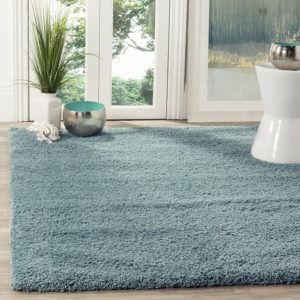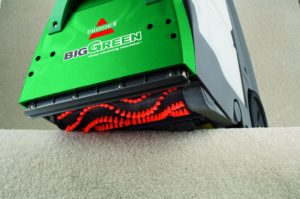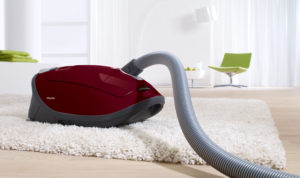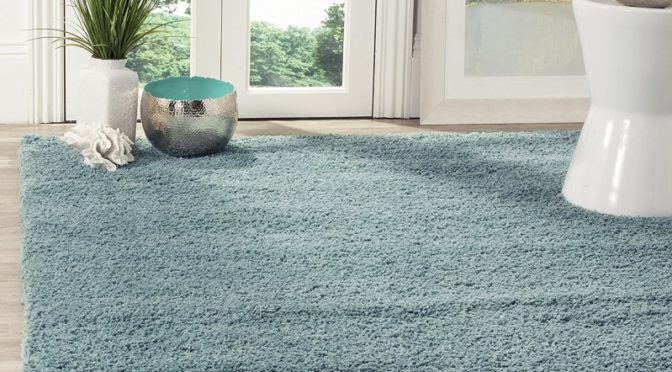
When choosing a carpet for your home, you’re going to have a lot of options thrown at you, and it’s easy to get overwhelmed. But as with many problems in life, there are only a few really important things to keep in mind for success. If you’re ready to buy a carpet, aside from your budget, you’ll want to pay attention to your carpet style and the fibers you choose for it. We’ve taken a broad look at synthetic carpet fibers and a more specific look at nylon and polyester; today we’re going to review olefin, also known as polypropylene, and cover its pros, cons, durability, staining and soiling characteristics, and where it’s likely to best work in your home. It’s a lot of ground to cover, so let’s get started.
What is olefin and what are its defining characteristics?
Olefin is a synthetic fiber also known as polypropylene; the fiber has a broad range of uses in domestic and commercial applications, and one of those uses is to make carpets. Most manufacturers and retailers in the carpet industry will call the fiber by either name, as they’re synonyms of each other.
Compared to its fellow synthetic fibers, a few things set olefin apart, including its appearance, durability (we’ll get to that in a moment), and stain and soil resistance. People who like olefin are drawn to it because it resembles wool visually and in texture. As a result, you’ll often find olefin as a fiber for looped berber carpets and area rugs, as both commonly use wool as a fiber base. Depending on its finish, olefin can appear bright and shiny like polyester or matte with low reflectivity.
How durable is olefin and where does it work best in the home?
Compared to its fellow synthetic fibers, olefin has less resilience. This means it won’t bounce back nearly as well after the fibers are compressed underfoot. As a result, you’ll often find it in looped broadloom carpet styles, including berbers and commercial carpets with level loops. Olefin tends to last longest when tightly looped and in low carpet piles.
Price-wise, it’s cheaper than nylon and polyester because it has a lower cost of production. However, it also won’t last as long as a nylon or polyester carpet (keeping in mind that a range of factors affect carpet quality aside from fiber choice), so it’s important to balance its longevity against its purchase price.
When used residentially, olefin works best in areas that see lower foot traffic, such as a bedroom or nursery. You won’t want it in high traffic areas like stairs, hallways, or family rooms. As a commercial carpet, olefin works best in light- or medium-grade applications.
Because olefin is a hydrophobic fiber, you’ll often find it used in outdoor and marine environments as a weather resistant (not waterproof) carpet. The fibers don’t take long to dry and aren’t hospitable to mold or mildew when wet. On top of this, since the fibers are solution-dyed (we’ll go into what this means in a moment), they’re highly resistant to fading, and won’t be discolored after being exposed to sunlight and ultraviolet rays.
Olefin is also a good choice for basement carpeting because it dries quickly and is highly resistant to mold. While olefin isn’t waterproof, if you want some sort of carpeting for a damp or flood-prone basement, an outdoor olefin-fiber carpet will probably be your best option.
Next we’ll take a look at staining and soiling and how olefin fibers fare with preventing both common carpet quandaries.
What’s the difference between staining and soiling?
Two of the key features of olefin to keep in mind are high stain resistance and low soil resistance. To understand how olefin will stand up to different contaminants, it’s first necessary to understand just what staining and soiling mean in carpeting.
Staining refers to the connection between a substance and open dye sites in a carpet fiber, leading to changes in the appearance of the fiber. Examples include spills from red wine, coffee, and orange juice in carpeting.
Soiling refers to residues in carpet fibers that serve as dirt magnets, resulting in what looks like a stain but is chemically different. Soiling typically begins with oil from human skin (e.g., the feet and hands), but can also come from traces of cleaning solutions that were not fully washed out from carpeting.
Why does olefin have a high degree of stain resistance?
Olefin has great stain resistance because it is hydrophobic; this means that at a molecular level, olefin fibers don’t like liquids. As a result, olefin fibers are solution dyed, which means their fibers are blended with colors as they are made instead of after the fibers are fully formed. Solution-dyed fibers can’t really be stained after production because there aren’t open dye sites on the fibers for liquids and stains to bond to; you could even spill bleach on such a carpet without changing the fiber colors at a molecular level.
What makes olefin a poor choice for soiling resistance?
On other hand, olefin is a poor choice for soil resistance because it’s oleophilic, or oil-loving. Petroleum and gas engineers love it because olefin is so attracted to oils that they can use it to soak up oil spills through olefin nets in lakes and oceans.
However, this affinity for oils means you’re going to have a fight on your hands if you spill anything oil-based on an olefin carpet, as it’s not going to want to let those oils go. As a result, you typically won’t see olefin recommended for areas in your home prone to oil spills, including kitchens and dining rooms.
That said, you can reduce some risks of olefin soiling–those related to skin oils–by wearing socks and slippers when walking on olefin carpet. This method is unlikely to work for guests, children, or pets, though.
Do you recommend particular carpet cleaners or vacuums for maintaining olefin?

Given olefin’s strength in stain resistance and weakness in soiling resistance, you might wonder if there are recommended vacuums or carpet cleaners for cleaning and maintaining olefin fiber carpets. The truth is that just about any machine can clean polypropylene; what really makes a difference is frequent cleaning to prevent soiling. For carpet cleaners, we recommend the Bissell 86T3 Big Green. It works with all residential carpet styles and as we’ve noted repeatedly (e.g., here and here), it’s durable enough to be the last carpet cleaner you ever buy.

When buying a vacuum, we recommend spending a bit more to gain a lot more in power, quality, noise reduction, and reliability. In our books, two of the best choices at high and medium budgets are the Miele Complete C3 Soft Carpet or the Miele Compact C2 Electro+. Both will manage carpets in a range of piles and styles as well as hardwood flooring. We’d choose the Soft Carpet for a buy-it-for-life, do it all machine, and the Electro+ as a compromise that does almost as much and almost as well for a bit less money.
![]() You can buy the Bissell 85T3 Big Green carpet cleaner here on Amazon. You can buy the Miele Complete C3 Soft Carpet here or buy the Miele Compact C2 Electro+ here. The blue California Shag olefin area rug above is available here.
You can buy the Bissell 85T3 Big Green carpet cleaner here on Amazon. You can buy the Miele Complete C3 Soft Carpet here or buy the Miele Compact C2 Electro+ here. The blue California Shag olefin area rug above is available here.
![]() Canadians can buy the Miele Soft Carpet here, the Compact Electro+ here, and the Bissell Big Green here.
Canadians can buy the Miele Soft Carpet here, the Compact Electro+ here, and the Bissell Big Green here.
 If you find our research on PMC helpful, you can follow our efforts to keep maniacally reviewing home cleaning tools by shopping through our links above. We promise to keep fighting the good fight against every horror children, animals, and grown, yet messy humans can inflict upon a clean home.
If you find our research on PMC helpful, you can follow our efforts to keep maniacally reviewing home cleaning tools by shopping through our links above. We promise to keep fighting the good fight against every horror children, animals, and grown, yet messy humans can inflict upon a clean home.

